Iran Windcatchers – What Is Iran Known For?
Iranian architecture has a long and diverse history, dating back over 3,000 years.
Iranian architectural monument ruins, from Syria to India and China, may be discovered everywhere.
People who lived in challenging regions had no other option for ventilating their dwellings and regulating the interior temperature until fossil fuel-powered air conditioning became widely accessible. They did this by considering several external circumstances, including their location, orientation in relation to the sun and wind, the temperature in their region, and local resources.
Iran Windcatcher or Badgir, Ancient Persian Architecture
In this article, we explore how ancient civilizations in Iran, Western Asia, and North Africa utilized windcatchers to cope with the region's severe temperature and offer passive cooling solutions that are being utilized in modern architecture, demonstrating how local methods to climate adaptation are crucial for the creation of today's built environment.
Persian Windcatcher History
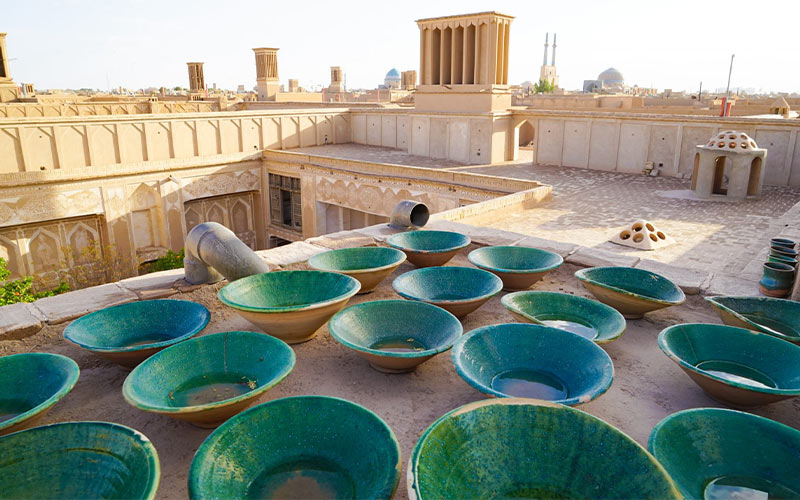
The climate in Iran is very dry and extreme. It may be pretty hot during the day and significantly cooler at night. When Iran was known as Persia, long before electricity and air conditioning were created, remaining cool in these conditions took creativity; as a result, windcatchers were created. According to historical records, windcatcher, known in Persian as Badgir, also went by Badkhan, Badras, Badahang, Badjeer, Khishkhan, and others. This equipment, which resembles a tower and has holes at the top, is used to ventilate and cool the air within homes, mines, and Ab anbars (water reservoirs) in the Middle East or North Africa, particularly in dry and semi-arid regions.
One of the icons of Iranian culture and architecture is the Iran Windcatchers. Although there is no concrete proof that the first wind catcher was ever created, its creation and use date back to 4000 BC. This construction is primarily used in the centre and southern regions of Iran. Among these are Yazd, Ardakan, Kerman, Bandar Abbas, and a few of the islands in the Persian Gulf. Some nations, including Afghanistan, the United Arab Emirates, Oman, Pakistan, Iraq, Syria, Egypt, Jordan, Bahrain, Qatar, Turkey, and others, also use wind catchers in some form.
For natural ventilation in structures, windcatchers are a traditional Persian architectural style. The elemental form consists of a tower rising above a building below and having apertures at the top. One of Iran's major cities, Yazd, is called the "City of Windcatchers." Its climate, which is extremely hot and dry, is ideal for this kind of ancient Persian cooling system. In Yazd, several historic structures have exquisite windcatchers. The highest windcatcher in Iran as of right now is the Dolat Abad tower. It rises from a structure in the renowned Dolat Abad Garden, which dates back to the 18th century. Another notable feature of Yazd is its extensive system of qanats, which are underground pipes used to bring water from a well to the surface. Together, the qanats and Iran windcatchers frequently enhanced the cooling effect.
Persian Windcatcher Architecture
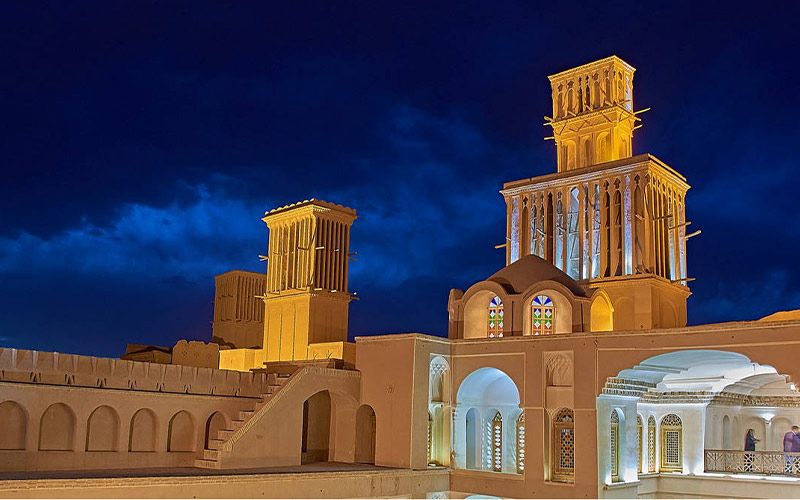
Iranian architecture employs many methods, including glass and mirror work, stucco and plasterwork, tile and brickwork, and other aesthetic components. Geographical, religious, political, technical, and natural variables, as in all architecture, affect the quality and quantity of structures. The availability of sufficient natural resources and consideration of issues like climate led to the creation of many unique architectural designs and constructions in Iranian territory. The environment itself may be a source of both restriction and liberation. The Iranian kavir (desert) severely restricted the structural ideas and types of structures that Iranian architects could create.
However, Iranian architects have had the opportunity to be creative with their designs and solutions to societal needs, thanks to the difficulty of dealing with the enormous expanses of arid terrain. The level of technological expertise and abilities in the area is another crucial factor influencing architectural traits. The Iranian qanâts (underground water canals), âb-anbârs (water reservoirs), and badgir (Wind Towers) are some excellent examples of adaptations to these technological and environmental challenges. Since a large portion of Iran is desert, Iranian cities and villages must deal with issues including water scarcity, extreme heat, and even severe winds.

Due to the restricted resources accessible to builders in these cities, mud and its derivatives were the primary building materials used. Buildings frequently employ the mud and mortar dug from construction sites, resulting in a bare minimum of self-sufficiency. Bricks and mud can efficiently withstand the sun's relentless beams throughout the hot summer months, whether baked or unbaked. Due to the effectiveness of firm, unbaked brick walls as insulation, indoor heating is not employed extensively during the colder months. Tall walls, arching roofs, dome-shaped water reservoirs, and wind catchers or air traps are frequently used in the construction of buildings. Residential buildings are frequently positioned at precise angles to capture the most heat while allowing breezes to bring cooler air inside.
The windcatchers serve as chimneys for the homes and aid in the ascent and escape of heated, dusty air, allowing fresh air circulation. Although the construction process differs in various Iranian cities, windcatchers are typically square in shape, built of adobe, and feature openings in the walls. A septum and X-shaped boards were used to partition the windcatchers' interior into several portions. The Iran Windcatchers are made up of two groups of parts, some of which are decorative and some of which have a purpose.
Iran Windcatchers' Several Areas Include:
- The windcatcher's roof
- Ventilator
- Channel: the area between the windcatcher's head and the building's roof.
- Divider Partitions: They segment the ventilation channels, mainly composed of clay or brick. There are two different divider types in each windcatcher.
- Primary Partition: They separate the main shaft into smaller ones and extend nearly to the tower's core.
- Secondary Partition: They are shorter and don't go all the way around the tower. From the outside, they seem to be cooler louvers.
- Head: the top of the building, which includes the ventilation shafts and input and outflow holes.
- Open and Closed Vents: the area between two walls. A vent is said to be open if air can pass through it and closed if it cannot.
The windcatchers typically include external ornamentation made of regional ornamental components like brick, tile, and stucco works, enhancing these historic towers' attractiveness.
Various Windcatcher Designs
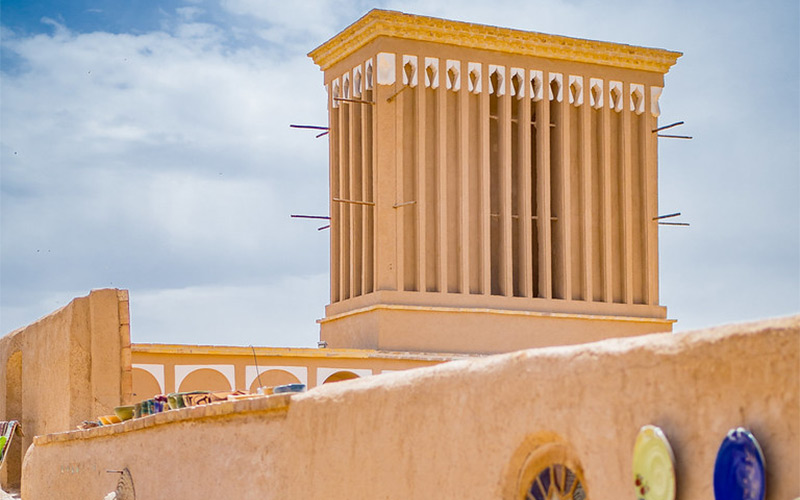
Windcatchers are constructed by traditional architects on top of small rooms that are designated for the windcatchers and the roofs of dwellings. Badgirs can have windows on one, four, or eight sides depending on the wind direction in each city. For instance, all wind catchers in Yazd have eight windows. Still, those in Meybod, a city 50 kilometres away from Yazd, have just one window, reflecting the city's exposure to scorching, dusty desert winds.
Various Windcatcher Designs Are as Follow:

- Uni-directional (Ardakani Windcatcher):
If the wind tends to come from only one direction, then there will only be one downwind opening and no additional openings. - Bi-directional (Kermani Windcatcher):
These windcatchers often perform better and are more effective at circulating air. They draw and blow air into a structure, respectively. - Multi-directional (Yazdi Windcatcher):
These windcatchers are more significant and higher than the previous two categories, with four, six, or eight sides. Each aperture has a specified height and structure determined by the area's climate.
Sometimes, a small pool is built at the tower's base to cool the air and prevent dust from entering the home.
One of the most popular types is a windcatcher with four sides. The polyhedral windcatcher is more common and may be found anywhere.
Chogoghi windcatchers are the other type of windcatcher. Instead of using straight towers as wind catchers, various structures in the shape of curved pipes are employed in this kind. It is typically found in Sirjan and serves a similar purpose as polyhedral windcatchers.
How Does an Iranian Wind Catcher Work?
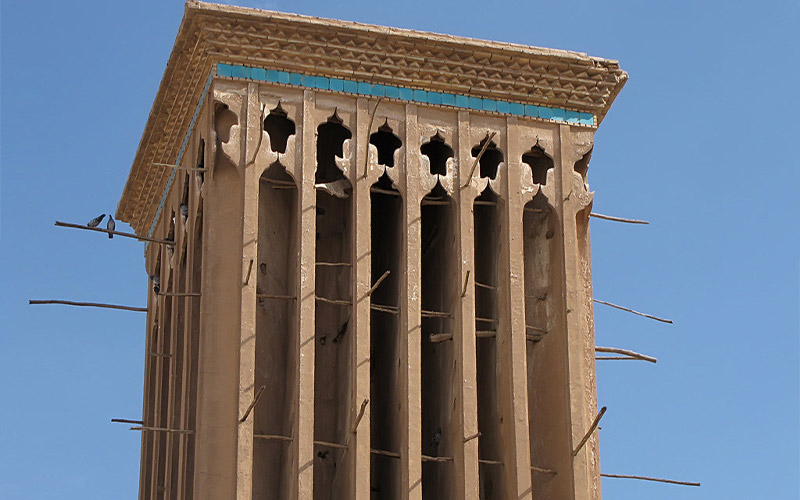
Air movement is produced by the rising of warm and the lowering of cold air, as was detailed in our article about natural ventilation and its application in many contexts. Warmer air rising from the land's surface causes a region of low pressure. As air rises, it cools, goes toward the water's surface, where it falls, builds up a pressure area, and pushes cold air in the direction of the land. The movement of these areas produces wind.
In order to capture the cool breeze and channel it downward toward the interior area, windcatchers are chimney-like structures made of clay, wood, or bricks that are built onto the roofs of homes, mosques, or storage areas. These towers function by leaving just the shaft against the incoming wind open and guiding cold air flowing at higher levels down through vertical holes with oblique sides (also known as directional openings).
Once the cold air has entered, the warm air that has been flowing inside the interior area is forced out via apertures made on the windcatcher's opposite side. Windcatchers serve as chimneys in places where there isn't a cool breeze, forcing hot air upward and out of the tower's apertures to control the temperature within the house.
As mentioned before, the spread of windcatchers worldwide led to variations in their design, giving rise to uni-directional, bidirectional, multi-directional, and occasionally cylindrical constructions, all of which rely on the direction of the wind and the position of the building.
A classic windcatcher is a square-sectioned vertical tower with four directional or oblique apertures and sporadically placed interior blades or shafts; however, there is no one-size-fits-all design. The effectiveness of windcatchers affects the airflow's velocity and turbulence depending on the tower's height, number of sides, apertures, and number and placement of internal blades.
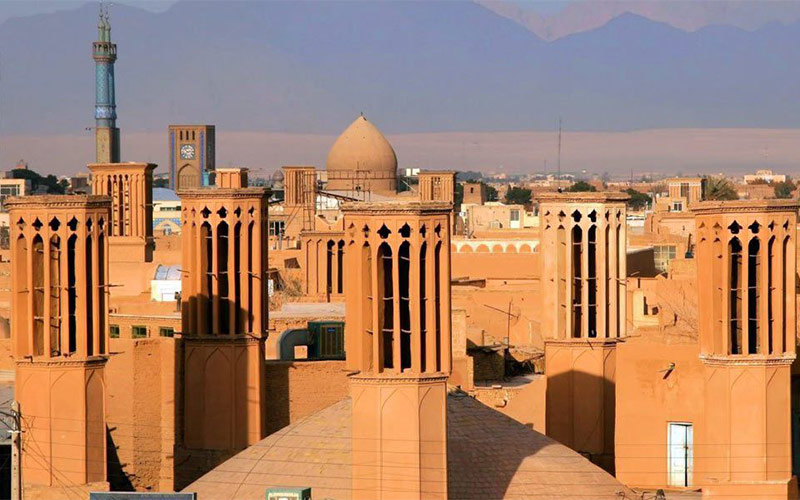
If the wind in that location only blows from one direction, the windcatcher will only need one downward entrance (uni-directional windcatcher); however, if it is being built in an area with different wind directions, internal walls or blades are incorporated to split the tower into two vertical portions that gather, direct, and discharge air into the structure (bi-directional windcatcher). On the other hand, windcatchers are constructed with four, six, or eight sides and several interior floors and cross-sections in regions with more significant winds and intense temperatures (multi-directional windcatchers).
In order to provide a consistent water supply for homes in dry regions, qanats (Arabic meaning channel or canal) are frequently built over. These water-reservoir channels provide a cold, dense air current due to convection and evaporation since they are situated in entirely shadowed places (typically underground). Its trapped air current, which is stranded below and unable to ascend to the less dense surface air, mixes with the hot air sucked into the qanat and forces cold air into the inner chamber.
There are one, two, and three floors in windcatchers. The height rises with more floors, increasing the amount of wind intake. The intake of wind is also lessened due to the uneven surface. The windcatcher's top level was occasionally utilized to flag and direct travellers.
Windcatchers as Tourist Attractions
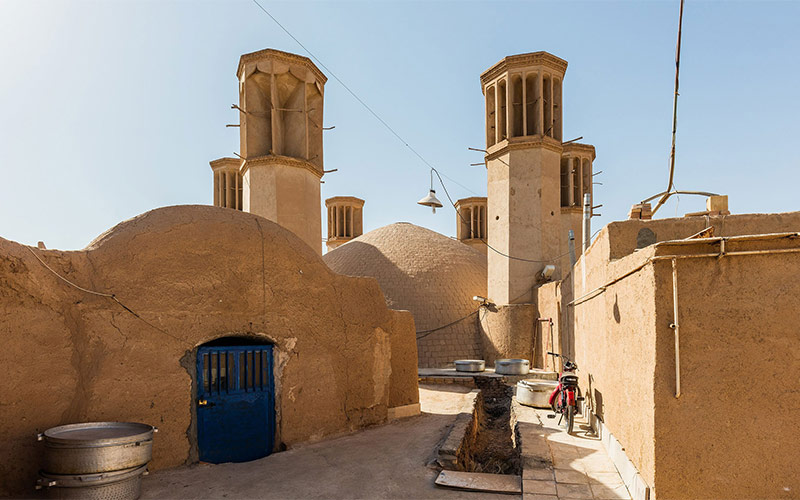
Since the beginning of time, Iran windcatchers have been adorned with carved arches, bricks, and other decorative elements for aesthetic reasons. According to the Persian poet Nasir Khusraw, who lived in the fifth century, the oldest mention of these fantastic creative systems belongs to that era. Meanwhile, the oldest one still standing in Iran only goes back to the 14th century because of how delicate these constructions are. Windcatchers may be found throughout the Middle East, North Africa, and even India since Persian architecture has significantly impacted its neighbours.
Iran Windcatchers (Badgirs) and Persian Qanat, an underground water route classified by UNESCO as a World Heritage Site, are examples of Persia's artistic talent that local communities may still enjoy while astonishing visitors.
Iran windcatchers serve as a poignant reminder of how prehistoric civilizations adapted to the harsh desert climate of the area.
Modern Context

People are now much more ecologically conscious, choosing more passive solutions to reduce their energy use and carbon impact. Natural ventilation is more environmentally friendly and economical because it depends on natural external elements like the wind and the temperature of the interior space and its surroundings. Some passive ventilation techniques include single-sided ventilation, cross-ventilation, stack ventilation, and the chimney effect. However, several studies have demonstrated that windcatchers are actually more effective than windows, particularly in crowded locations where airflow is restricted.
What Is The Purpose Of a Windcatcher?
In their most basic form, wind catchers channel cold breezes downward into the house or underground storage spaces to cool perishable items.
How Effective Is a Wind Catcher?
According to the computational findings, a modern windcatcher can improve interior airflow distribution while lowering air temperature by 13% and raising air velocity by 63%.
Bottom Line
The Iran Windcatchers (Badgir) architectural element, which is utilized for air conditioning and comes in many types, often distinguishes Iran's traditional architecture, particularly in the eastern and southern cities.
Windcatchers are surprisingly efficient and can cool lower-level areas when combined with thick adobe walls. Windcatchers are still common in Iran and many other Middle Eastern and Persian Gulf nations.


Comment
Leave a Comment